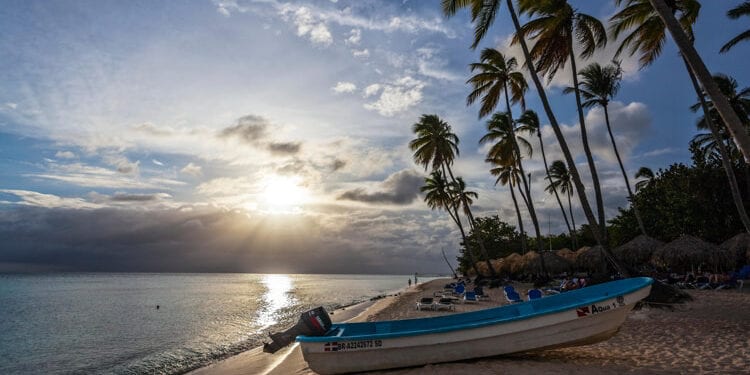Portugal, France, and England turned him down… so Christopher Columbus decided to give Spain a try.
Buoyed by their recent victory against the Moors and looking to expand their influence even further, King Ferdinand and Queen Isabella were more receptive to Christopher’s proposal than their European counterparts had been. The Spanish royals agreed to sponsor Chris’ sailing expedition.
They were betting on Columbus being able to fulfill on his promise to find a shorter route to Asia, making Spanish trade with that region easier and more profitable. Chris’ patrons had visions of silks and spices dancing in their heads, but nobody… including Columbus himself… could have imagined where his journey would actually lead.
He thought he’d landed in India. In fact, Columbus had discovered an island he would name Hispaniola.
Four years later the Spanish crown doubled down on its investment in Christopher and sent his brother Bartholomew to meet up with him. Bartholomew was named governor of the territory and charged with building a city representative of the Spanish colonizers that could serve both as the Spaniards’ base in the New World and as a staging post for further explorations into this uncharted territory.
That city, called Santo Domingo de Guzmán, became home to the first palace, the first customs house, the first hospital, first cathedral, first university, first library, even the first pharmaceutical business (marrying the medicine the colonizers brought from Spain with the natural healing techniques of the Indians they met upon arrival) in the Americas.
The Columbus brothers and their cohorts were bound and determined to make the land they’d discovered as much like the land they’d set sail from as possible. That approach had its downsides, of course, but much of the architectural legacy that New Spain strategy led to remains… and makes Santo Domingo stand out among all the cities the Spanish colonizers would go on to build in these parts over the decades and centuries to follow.
Indeed, Santo Domingo could be called the birthplace of the New World. To this launch pad, Spain sent a series of conquistadors, each of whom leveraged the city the Columbuses had built to give their exploratory journeys increased chances of success. From Santo Domingo, Pedro de Alvarado set sail and discovered Guatemala and El Salvador… Hernán Cortés found Mexico… Francisco Pizarro González conquered Peru… Pedro Arias Dávila located Nicaragua… Vasco Núñez de Balboa led the Europeans to the Pacific Ocean… and Ponce de León happened upon Puerto Rico and Florida.
The oldest city in the Americas is today an awfully nice place to spend a Sunday afternoon. Each time I return I’m happy to note more cafés and restaurants with more sidewalk seating… more shops… more boutique hotels occupying the centuries-old buildings… and more tourists to keep all those going concerns going.
Centuries ago, Spain used this city to launch a golden age. Today, Santo Domingo is playing a key role in Dominicans’ efforts to launch a new phase for their own country.
The New Panama City
Across town from the spot where Christopher and Bartholomew hung out the landscape is increasingly dotted with new condo towers, mega-malls, five-star restaurants, and multiplex cinemas. Walking around this part of town I’m reminded of Panama City 15 years ago… when Panama first began pushing for real and sustained economic expansion and a place on the world stage.
Panama’s capital from a decade-and-a-half ago is unrecognizable alongside current-day Panama City. Massive land reclamation projects, hundreds of high-rise towers, top-tier brand-name hotels, and monumental infrastructure projects have reshaped this city entirely. I don’t know if Santo Domingo will undergo as radical a transformation over the coming 15 years, but I can tell you from conversations with key players in the country’s government that growth is the battle cry.
The increased services and amenities and improved infrastructure and overall standard of living that the current investor-friendly climate is fostering are great to see. However, when I’m in town, it’s not in the new Santo Domingo that you’ll find me… but in the old town… where strolling musicians serenade and al-fresco dining is de rigeur.
My preferred perch is a café on the grand Plaza de España. I enjoy watching the passing show of children chasing each other around the cobblestones and tourists consulting their maps and taking selfies in front of the palace from which the Spanish managed and administered the New World.
If the Columbuses could see this place now.
Sincerely,

Kathleen Peddicord
Founding Publisher, Overseas Opportunity Letter










